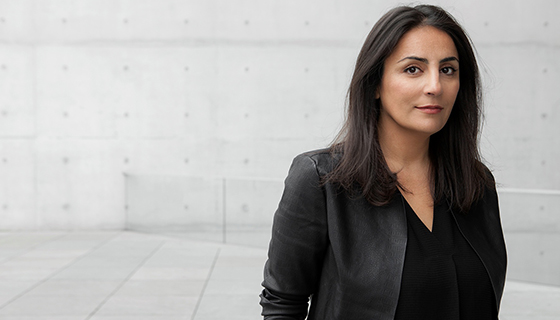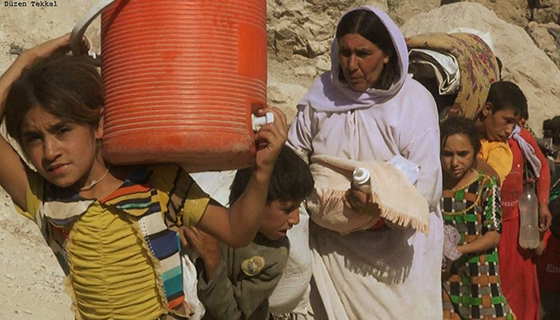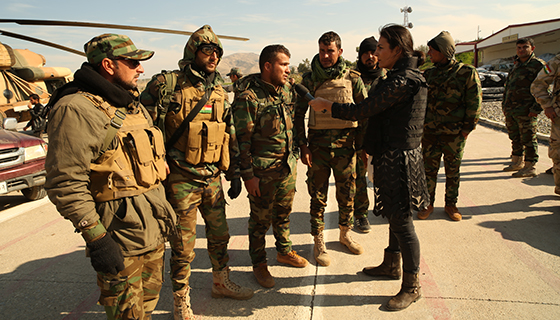|
Defense units of YPG (People's Protection Units), back from the Sinjar Mountains, gather at the military Base of Peshmerga in Dayrabun
|
There are about one million Yazidis in the world, half of whom are on the run today. Originally, they mainly settled in northern Iraq and Syria, but also in southeastern Turkey, where Armenians once used to live. Today, most of the Yazidi areas are controlled by ISIS.
“The history of both Armenians and Yazidis is a sad one: the two people share the same suffering due to persecution. I remember my grandmother telling me that she took in Armenians back in the days, around the year 1914, when they were being persecuted. Yazidis and Armenians offered each other protection. Unfortunately, our ancestors couldn’t live in dignity because of the constant threat in the Muslim countries that were their homes. My grandmother also told me that she preferred to do her shopping in places owned by Armenians,” Düzen recalls.
Unlike the Armenians, the Yazidis were largely spared genocidal massacres 100 years ago. “I suppose it can be attributed to the fact that they have always lived in total seclusion, keeping their religious life a secret. They have always shied away from public life or education. For 1,000 years, the Yazidis have been practicing their apolitical religion, passed down orally from generation to generation. They preferred not to send their children to school for fear of Islamization, whereas Armenians always attached great importance to education and insisted on living their religion openly and being proud of their heritage. This was their undoing,” Düzen says. Although the Yazidis have kept a low profile, harm has been inflicted upon them time and again: up to 72 massacres have been carried out against the religious minority in the course of human history. “The world has just been made aware of the barbaric, terrorist tactics used by ISIS, but the Yazidis have been accustomed to them for a long time,” Düzen says.
“The only difference between the Yazidi and the Armenian Genocides are the numbers: while the former may have claimed relatively few victims, the latter cost the lives of one and a half million people. How does one explain the rape of eight-year-old girls? How does one look into the eyes of children who lost both parents within minutes, for no reason other than being Yazidi, as I am? I captured the horror on camera so that no one could plead ignorance in the future. It’s my firm conviction that we all have a responsibility for what we see,” Düzen explains.





